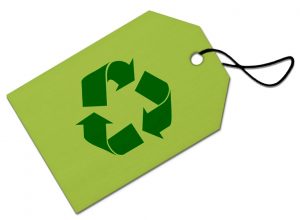Houston, TX – How to Read Plastic Recycling Labels for Office Recycling
Posted in: Client Examples
 A plastic grocery bag, cell phone, juice bottle, or food container are not all the same type of plastic. Plastic is like a family name that contains many different members. To eliminate confusion, the Society of Plastics Industry implemented a coding system in 1988 to indicate what type of plastic each product.
A plastic grocery bag, cell phone, juice bottle, or food container are not all the same type of plastic. Plastic is like a family name that contains many different members. To eliminate confusion, the Society of Plastics Industry implemented a coding system in 1988 to indicate what type of plastic each product.
1 Polyethylene Terephthalate/PETE
This type of plastic is fully recyclable and is accepted by almost all curbside recycling programs. Just rinse out any food or residue before placing anything into the office recycling containers.
2 High-Density Polyethylene/No. 2 HDPE
This is another common type of plastic found in objects like milk jugs, shampoo bottles, or cleaning containers. It is a lightweight, durable type of plastic. This type of plastic is commonly recycled into toys, traffic cones, outdoor furniture, or other reusable objects. It is also commonly accepted by most curbside recycling company pickups but should be cleaned before placed into recycling.
3 Polyvinyl Chloride/No. 3 PVC
This versatile plastic is usually found in things like medical gloves, piping, and some food packaging. It is strong, durable, and flexible and therefore commonly recycled into objects such as window frames, binders, or gutters. No. 3 PVC has harmful chemicals in it that can be harmful to humans and is not a widely accepted recyclable by commercial recycling companies.
4 Low-Density Polyethylene/No. 4 LDPE
No. 4 LDPE is most widely used in grocery bags and frozen food packaging because it is lightweight and convenient for packaging. But the same qualities that make it great for bags or 6 ring bottle holders are what also make it not great for recycling as it can cause jamming of equipment. Do not recycle No. 4 LDPE in your office recycling bins. It is also not accepted at recycling pickup. However, most stores are equipped with bins that will accept this type of recycling.
5 Polypropylene/No. 5 PPE
Polypropylene is a tough plastic that is resistant to chemicals or grease. It is used in ropes, carpets, ketchup bottles, and straws. When recycled, it can be made into brooms, trays, or landscape borders. It was commonly accepted as a recycling product until 2018. Now, most recycling companies have discontinued recycling of this product, but a small amount still will. Check around when looking at recycling polypropylene.
6 Polystyrene/No. 6 PS
No. 6 PS is mostly commonly generalized as Styrofoam. It is very lightweight and only used for a single use. Egg cartons and disposable cups are made of polystyrene. It is rejected by almost every curbside recycling company and makes up about 35% of all landfill waste.
7 Other
This category is composed of miscellaneous objects that don’t fit in any other category such as nylon or Plexiglas. Other plastics can contain BPA, a harmful chemical. For this reason, they are not accepted curbside but may be accepted by other drop-off centers.
Return to: Houston, TX – How to Read Plastic Recycling Labels for Office Recycling
Social Web